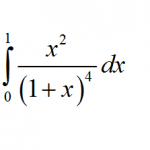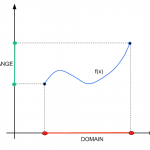Basically quantitative analysis refers to a method of providing relevant information by which all of the fundamental behavior of a specified event or a designated item can be explored and evaluated. This is done with the use of statistical tools such as measurement, and by building statistical models. Within quantitative analysis a value is given to an independent variable or several independent variables and their relationship is defined mathematically.

The tool of quantitative analysis is currently in favor with financial analysts who use quantitative analysis to predict the behavior of a company or its stock over time. Quantitative analysis techniques are also used retrospectively to measure and evaluate the past performance of an entity, and the prospective future performance may then be inferred from this assessment.
What is Quantitative Analysis?
Quantitative analysis refers to the mathematical science that employs the exact measurement of events and items and evaluates any and all relationships between the items. In the business world of today, quantitative analysis is used to compile and formulate the statistics that determine and describe everything from earnings ratios to the available cash flow of a business. Quantitative analysis is certainly a valuable technique to be used in the determination of difficult to assess things such as personal services
.Its Most Common Uses in the Real World
In today's fast paced market place the amount of available information is immense and tools such as quantitative analysis are necessary to make sense of the multitude of numbers. However the science of quantitative analysis is not just a tool to be used to decipher all of the existing information, quantitative analysis is used to actually tease apart each aspect of a business and thoroughly evaluate every detail of its function. By completely knowing the factors that influence a business with the use of quantitative analysis tools, an individual may maximize the business growth and its effectiveness. This means a small investment that makes use of quantitative analysis can result in more profit and stability in the long run
.For example, quantitative analysis is often used by businesses when they perform a market analysis prior to making the decision to open a new branch. If a restaurant is considering opening another eatery, it will perform a quantitative analysis. This quantitative analysis may include factors such as how many restaurants are in the area, what types, the demographics of how many people live, work, or come to the area for recreation and their frequency of eating out. When all the factors are computed, the quantitative analysis should give a good simulation of how well this restaurant can expect to do after opening and the decision will be made entirely upon the hypothetical forecast of the quantitative analysis. The restaurant chain may then open another branch in this location with a fair amount of confidence that it will succeed based entirely upon the statistical modelling that was done in the course of the quantitative analysis.
This technique has been employed by McDonald's and is responsible to a large extent for the success of the many chain restaurants. However, one notable failure of quantitative analysis occurred with the expansion of Wal-Mart into Germany, which failed to take into account the differences in shopping habits between Europeans, who do not tend to buy things in large quantities, and Americans, who routinely shop for supplies in bulk.
In case you have any suggestion, or if you would like to report a broken solver/calculator, please do not hesitate to contact us .








